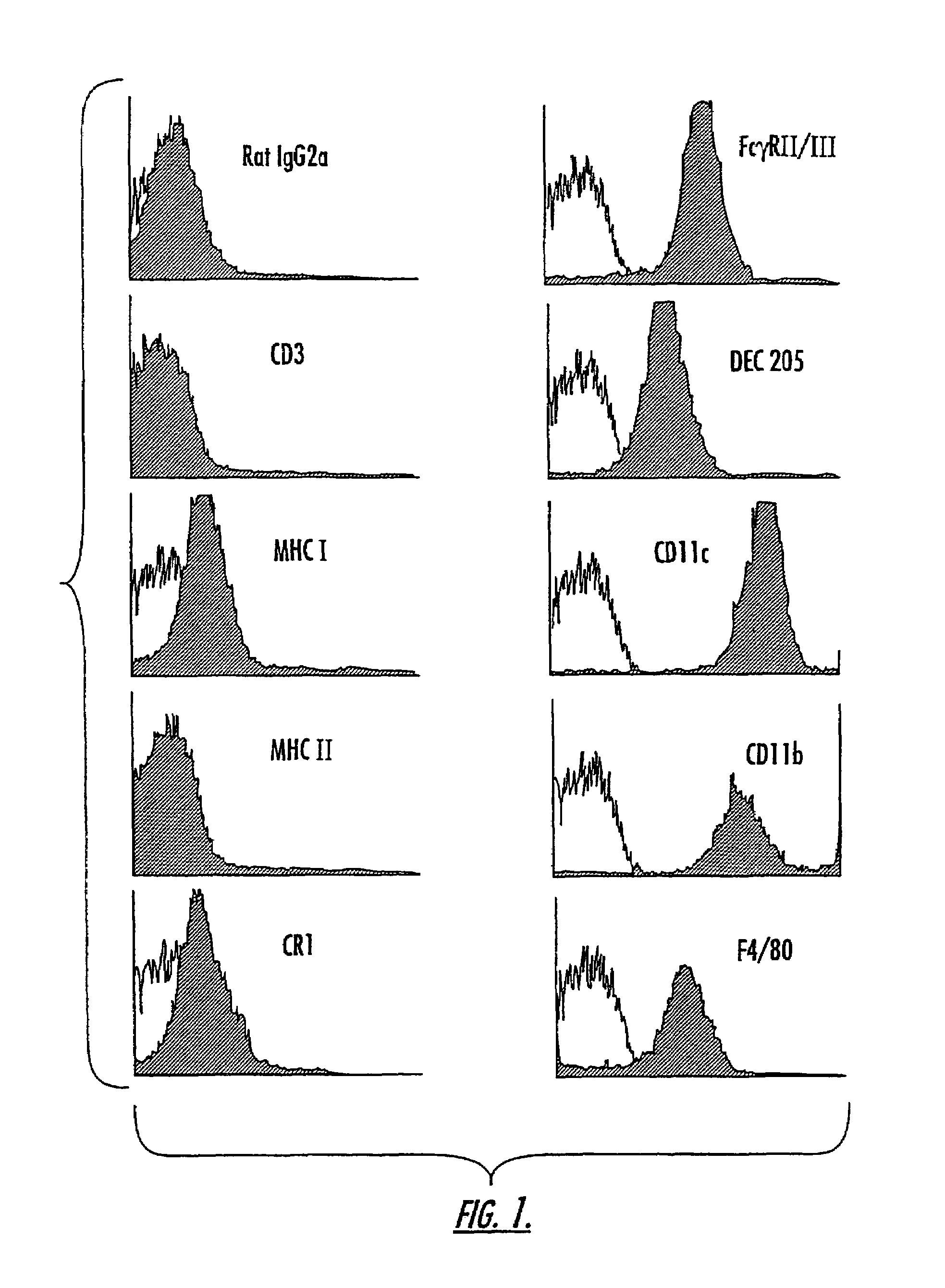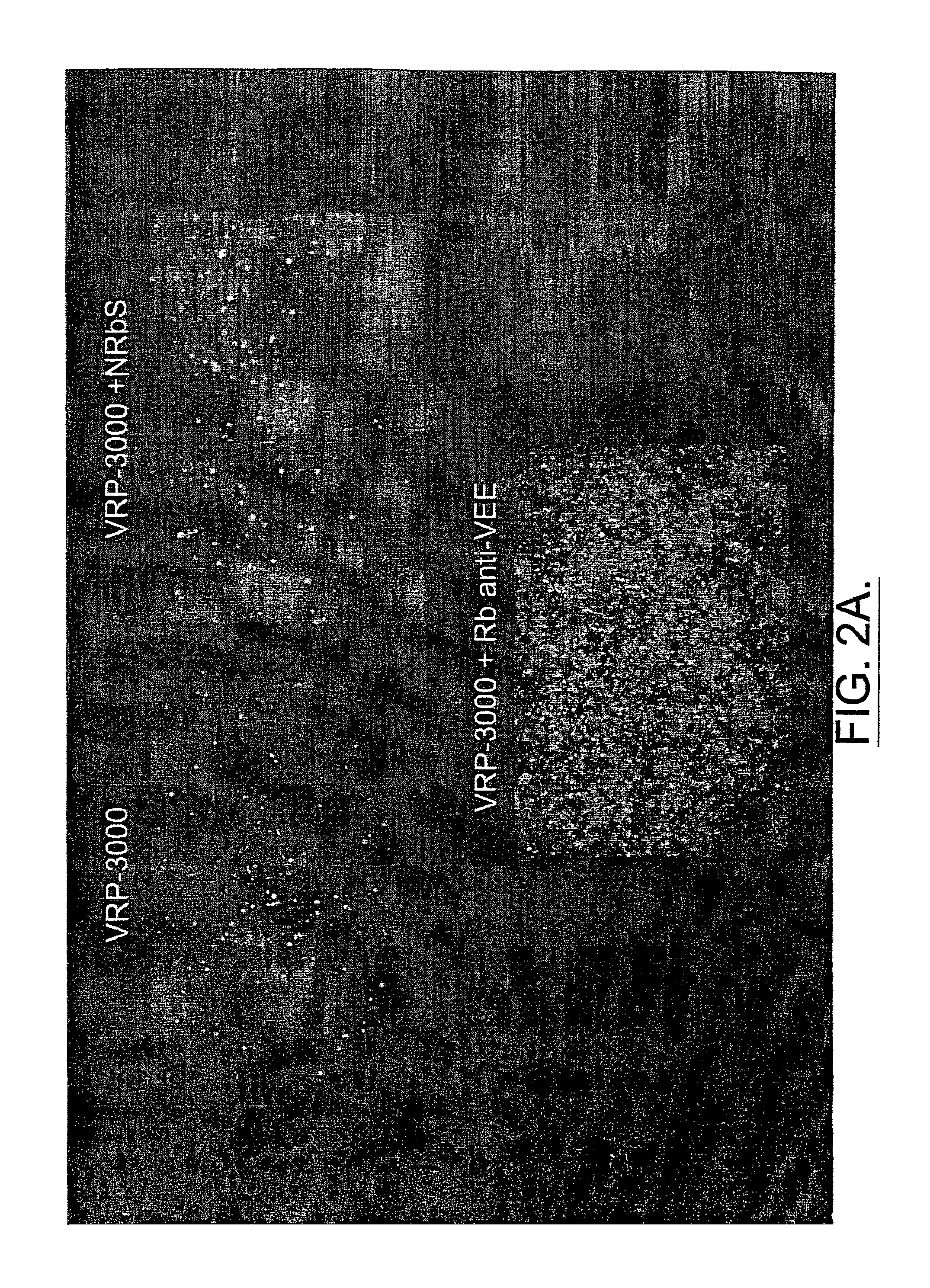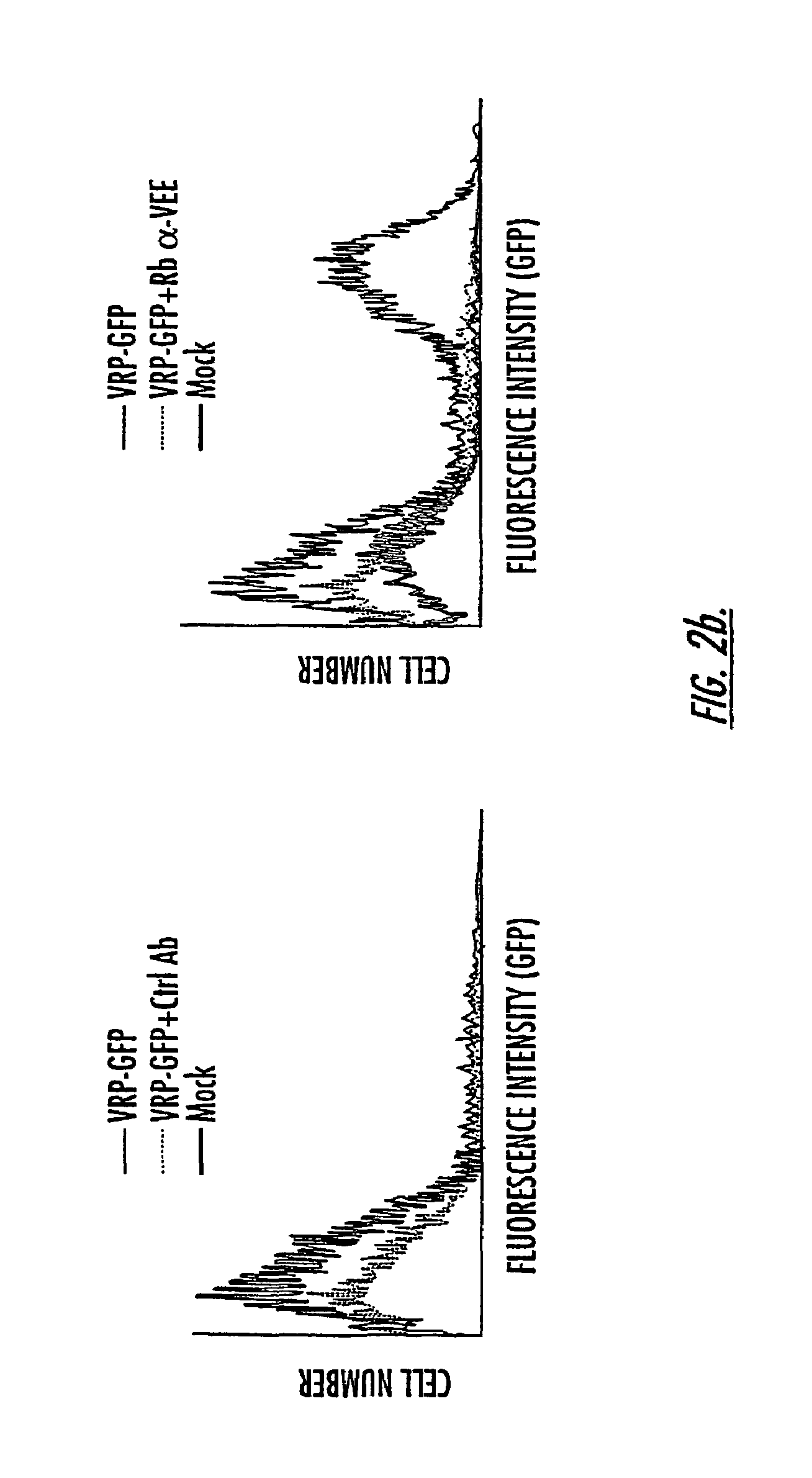Antibody dependent enhancement of Venezuelan Equine Encephalitis vector infection
a technology of venezuela equine encephalitis and antibody, which is applied in the field of alphavirus vectors, can solve the problems of unsafe or impractical immunization with a live virus strain, and achieve the effect of enhancing the efficacy of alphavirus vectors and improving the infectivity of particular cells by alphavirus vectors
- Summary
- Abstract
- Description
- Claims
- Application Information
AI Technical Summary
Benefits of technology
Problems solved by technology
Method used
Image
Examples
example 1
Materials and Methods
[0144]Virus: VEE replicon particles (VRP) expressing either influenza virus hemagglutinin (HA-VRP-3000 and HA-VRP-3014) or the green fluorescent protein (GFP-VRP-3014 and GFP-VRP-3014) were prepared as previously described (MacDonald and Johnston, 2000 J. Virology 74:914). Briefly, RNA transcripts from replicon cDNA plasmids encoding the appropriate heterologous gene were co-electroporated with RNA transcripts from two helper constructs encoding either VEE capsid or VEE glycoprotein genes into baby hamster kidney (BHK) cells. VRP were harvested directly from the culture supemates 24 hr following electroporation and titered on BHK cells. For these studies, VRP were produced using a glycoprotein helper that contained the V3014 attenuating mutations in E1 272 (ala→thr) and E2 209 (glu→lys) (Davis et al., (1991) Virology 183:20).
Mice and Cells: Seven- to eight-week-old female CD1 out bred mice (Charles River Laboratory) were inoculated subcutaneously (sc) in the lef...
example 2
In Vitro Infection of Bone Marrow-Derived Dendritic Cells by VEE
[0147]An in vitro cell culture system for VEE infection was established and optimized following protocols used to grow dendritic cells from bone marrow. Cells grown by standard protocols for growing dendritic cells from bone marrow, i.e. in either GM-CSF alone (BM) or GM-CSF and IL4 (BM-IL-4) resulted in cells which were poorly permissive for VEE with only 0.1% of cells infected. When bone marrow cells were grown under the same conditions to establish Langerhans cell lines from skin (BM-NS; GM-CSF and conditioned media from an epidermal fibroblast cell line, NS47; Xu et al., (1995) J. Immunol. 154:2697) resulted in a ten to twenty-fold increase in specific infectivity by VEE. This is consistent with the previous observation that VEE preferentially infects Langerhans cells in vivo when given by a subcutaneous route of inoculation (MacDonald and Johnston, 2000 J. Virology 74:914). Analysis of cell surface markers demonstr...
example 3
Antibody to VEE Enhances Infection of BM-NS In Vitro
[0148]Antibodies to Sindbis, a closely related alphavirus, have been shown to enhance infectivity of this virus on BHK cells independently of Fc receptors or complement (Flynn et al., (1988) Virology 166:82). Therefore, the potential enhancing activity of a rabbit anti-VEE antiserum previously shown to bind VEE infected cells (MacDonald and Johnston, 2000 J. Virology 74:914) was determined on BHK cells. In contrast to Sindbis, pre-treatment of VRP with VEE-specific antibodies diluted up to 1 / 6400 completely neutralized infection (FIG. 6). However, the same treatment of VRP with antibodies enhanced infection of BM-NS cells three to seven-fold (FIGS. 2A and 2B). Similar results were found using GFP-VRP coated in the VEE-3014 glycoprotein coat and incubating GFP-VRP-3014 in VEE3014 specific antibodies (data not shown). These same effects were observed with a polyclonal mouse anti-VEE serum and one of two monoclonal antibodies, 13B2.1,...
PUM
 Login to View More
Login to View More Abstract
Description
Claims
Application Information
 Login to View More
Login to View More - R&D
- Intellectual Property
- Life Sciences
- Materials
- Tech Scout
- Unparalleled Data Quality
- Higher Quality Content
- 60% Fewer Hallucinations
Browse by: Latest US Patents, China's latest patents, Technical Efficacy Thesaurus, Application Domain, Technology Topic, Popular Technical Reports.
© 2025 PatSnap. All rights reserved.Legal|Privacy policy|Modern Slavery Act Transparency Statement|Sitemap|About US| Contact US: help@patsnap.com



